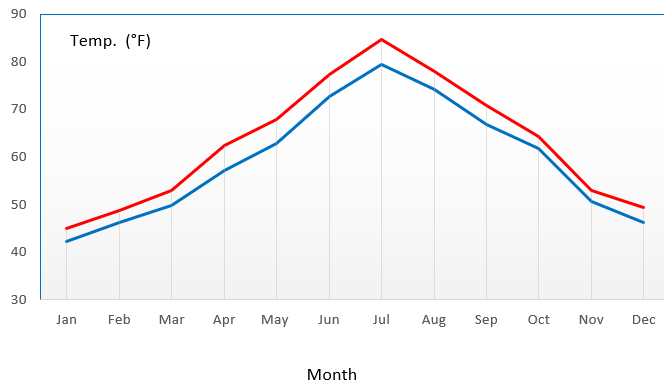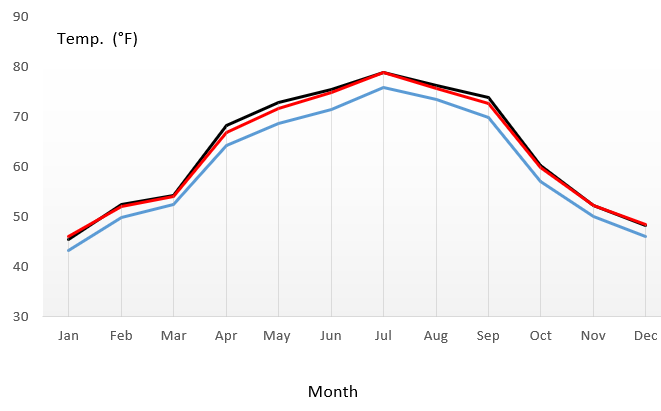There appears to have been a lively dowsing fraternity in France at the beginning of the 20th Century. The dowsing society “society of friends of radiesthesie” was established early on, by the Abbé Bouly, one of a line of priest dowsers, who had made significant advances in the application of the dowsing pendulum. In effect, there was a French school of dowsing, which was to influence dowsing practice for a goof part of the century.
For instance, the Abbé Mermet, the son of a dowser, also worked as a dowser for more than 40 years, and was active in the first half of the 20th Century. He developed an exceptional degree of skill in the use of the pendulum. He made a number of “discoveries”, including dowsing at a distance (Téléradiesthésie), the use of “samples” and the presence of certain “rays”. A record of his methods and experiences is contained in his book “Comment j’opère “. He also wrote “Principles & Practice of Radiesthesia. A Textbook for Practitioners and Students”.
He may have been the first to use “serial numbers” in dowsing. A given object has a kind of signature, involving the movement of a pendulum. The dowser holds the pendulum in one hand, between thumb and index finger, and then holds his other hand near or above the object. When this is done, the pendulum performs a certain number of oscillations (swings backwards and forwards), followed by the same number of rotations (also known a gyrations), together these movements form the first “series”. This series then ends mand the pendulum hesitates for a moment, then repeats the same number in a new direction (perhaps also in the same direction), and continues to do so indefinitely, as long as the operator holds his hand near or above the body under observation.
The number of oscillations, or rotations, in a series is the “serial number” of the object. He gives the example of silver, for which he observed six oscillations, followed by six rotations. Then it starts again. The figure six is the characteristic “serial number” of silver. He considered the serial numbers to be an objective measure, citing the fact that some experienced dowsers, if they had learned to hold the pendulum correctly, had obtained the same numbers. But he admits that some sensitive beginners tended to get higher numbers.
Another important method in his dowsing work was the use of various “rays”. While reading the following explanation, it might help to refer to the diagram in :
http://www.dowsing-research.net/blog_extracts/rays.jpg
The most important of his ray discoveries was the “fundamental ray”. He claimed that every body has a fundamental ray, emanating from it, directed at a fixed angle with respect to the North-South direction. It may also be inclined with a constant angle to the horizontal. The direction of the fundamental ray is always away from the object. The ray has a length which is proportional to the mass of the body, and given the same weight of various bodies, to their power of “radiation”.
He gives an example of a silver coin, of weight 10 grams. The direction of fundamental ray is towards the East and has a length of 10 cm. Contrast this with a copper coin of weight 10 grams. The direction of fundamental ray is 45° South-West and has a length of 5 cm.
For an example of its use see the following article from the BSD journal. Here the fundamental ray is used in the tanning of leather.
http://www.dowsing-research.net/blog_extracts/BSD_No55_1947_p144.pdf
A second ray which Mermet discovered was the “mental ray”. This links an object to the dowser and to any other person. It appears to come directly from the object to the brain of the observer. He considered it to be the second most important ray, after that of the fundamental ray.
A third ray he discovered was the “witness ray”. He claimed that every type of body sends out a ray towards another fragment of the same kind as itself. For example, if there are two silver coins and two copper coins in a room, a ray will link up the silver coins together, and another ray will do the same with the copper coins, but no ray will go from silver to copper. He considered this to be extraordinarily useful. For example, consider the case of a gold coin hidden, or lost, in a room. Another gold coin (the witness) can be placed on a table and the dowser then walks round the table. As soon as they pass between it and the searched for coin, the witness ray will be intercepted, and the pendulum, held in the right hand, will give the serial number for gold.
Finally, there is another ray, which was first discovered by another eminent dowser, named Abbé Bouly, who named it the “solar ray”. However, Mermet discovered that it had more properties than Bouly had ascribed to it and renamed it the “luminous ray”. It seemed to Mermet that the ray constantly linked an object either to the sun (even when masked by clouds), or to any artificial light source. (Bouly had thought this ray was only associated with the sun and that it only existed during daylight.)
The works of Mermet and Bouly proved influential in the use of the pendulum, and its use was further promoted by another dowser named, the Vicomte Henry de France. He wrote an influential book entitled “The Modern Dowser”, published in 1930. As with the Abbé Mermet, his method of pendulum dowsing was to identify an object through its “series”, which was the unique manner in which the pendulum gyrated over a sample of that object. His pendulum comprised a hemp string pone metre long, rolled on a little stick with notches at the end. The pendulum was suspended over the sample and the string unwound until a length is reached at which gyration begins; this could be either clockwise or anti-clockwise. The string length was fixed using the notches on the stick. Over different objects the pendulum would exhibit a number of periods of gyrations, taking place one after the other. For example, the pendulum gyrates in a certain direction. The dowser then stops the pendulum. Next the pendulum is set oscillating and it starts gyrating again in the same direction. Then it is stopped and restarted and again starts to gyrate. After N such periods, the pendulum stops gyrating and simply oscillates, or it gyrates in the opposite direction. The value of N is said to be the “serial number” of the object. For example, he gives some examples of serial number: Chalk,3; diamond, 6; coal, 18=3×6. A refinement of the system was to make to make the pendulum bob a sample of the object sought, or the sample was held in the hand that held the pendulum. Each dowser had to work out their own list of series
Another contribution to pendulum dowsing was made by an English dowser, T.C. Lethbridge, an archaeologist and Anglo-Saxon expert. Lethbridge devised his own method of pendulum dowsing, although it shared some similarities to those methods mentioned previously. By adjusting the length of string, his oscillating pendulum, would gyrate in a circular motion, indicating that the object, was detected. This process aided by holding a sample, or a picture, or simply imaging the object/thought. Every object had a detection length, which could result in a pendulum length exceeding well over a metre. Through his experiments, he was able to compile a table of string lengths corresponding to various objects, eg 22 inches for lead, 17 inches for truffles. Objects having the same pendulum length, could be distinguished by counting the number of oscillations that occurred over an object, before returning to oscillation, sometimes referred to as the “series”. For example, the metal silver and colour grey both caused gyrations for length 22inches, but silver caused 22 oscillations and grey caused only seven.
He even discovered that the pendulum could respond to abstract ideas, thoughts and emotions, eg death was 40 inches. In summary everything that he could detect could be done so with a pendulum length between zero and 40 inches. If the length of the string was increased then the sequence was repeated with 40 inches added, for example silver would be detected at 62 inches and the sequence repeated again after 80 inches. Lethbridge concluded, that the pendulum was not only reacting to the properties of the object sought, but was also acting as an extension of the dowser’s own mind.
In practice, this system has some fundamental problems. For many dowses, the length and series numbers they experience for a given item do not match with any other dowser’s. Furthermore, some items have identical length and series vales. These are apart from the facts that such a system takes time to calibrate and, given the length of the pendulum, can prove very unwieldly.
Ideas from the French school pervaded the early and mid-part of 20th Century dowsing practice. Ideas in general were pretty fixed, there was a bigger emphasis on the physical side of dowsing, including the type and composition of the dowsing instrument. By the 1960s, practice was becoming more personal, with a recognition that dowsers should find their own way of practicing. There was also a growing recognition, that there was a mental underpinning to dowsing and this caused much tension between the mentalists and the physicalists, as to what indeed caused the dowsing reaction. In effect though, dowsing practice is perhaps best understood as a kind of ritual, which the dowser follows to get the results they seek.
The following is a nice example of a lady who takes up dowsing. Se is initially bewildered by the methods she reads about, but finally discovers her own way and goes on to apply her new skills as a healer.
See “Let’s keep it simple”:
http://www.dowsing-research.net/blog_extracts/BSD_No199_1993_p13.pdf
This is merely a brief sketch of the recent historical development of the dowsing pendulum. Much has been omitted, but hopefully this missing practice will be covered by future postings.

